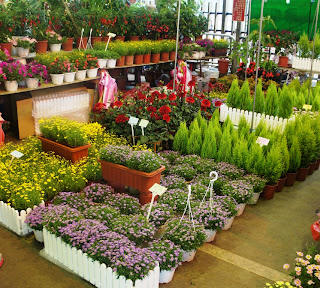 |
| The humongous gateway |
 |
| Gateway and the 2 cultural theaters |
 |
| Memorial at other end |
For a year I have been longing to do some travel sketching and I got to do so in Taipei. I got away from our hectic tour schedule and spend the whole morning by myself in Chang Kai Shek Memorial. I braved the 15 minute walk from our hotel towards the nearest MRT station and hopped on a 5-station train ride to the monument. As soon I got off the train and got out of the station, I was astounded to see that the tourist attraction is not what I was expecting.
 |
| The memorial framed by the gateway |
 |
| Details of the theater |
 |
| The other cultural center |
Compared to the other Taipei destinations we have gone to the last few days, Chang Kai Shek Memorial was of gargantuan proportions. I felt very much dwarfed by the scale of the gateway alone. Entering into the complex, I found myself drowned in the vast open space created by the 2 Cultural Buildings. The large traditional Chinese rectangular structures flanked the main gateway at each side while framing the long vista of the memorial proper. Chang Kai Shek's main memorial has an octagonal plan and a shape similar to a Chinese pergola. It is donned in the less traditional blue color. The size is very much overwhelming. Just looking at the distance between the memorial and the main gate made me tired, but I made it to the base to scrutinize the architectural details.
 |
| View of the memorial from my seat |
 |
| Taichi ladies |
 |
| Memorial up close |
It was almost noon when I decided to find my corner, where I could sit and do my usual round of sketching. I found an al fresco cafe at one of the cultural theater buildings. It had a very nice view of the monument plus it presented the chance to sample the tempting cold green tea with mint on the menu. I could not also resist ordering a slice of chocolate cake.
 |
| My sketching corner |
I made the far corner table as my vantage point, where I could also watch a group of Chinese ladies performing graceful Tai chi. It was a pleasant scene, very enjoyable to watch. But I had to bring out my trusted pen, journal and watercolour to force myself to finally start sketching. It took about close to an hour, but probably because I wanted to prolong sitting in the comfortable corner while partaking on my tea and cake treats. But what I accomplished drawing this time was not bad at all. I also found an official Chang Kai Shek Memorial stamp seal to make the drawing more authentically done on site.
 |
| My quick sketch of the memorial |
 |
| National Palace Museum also in Taipei |
 |
| Museum walk |
In the Taipei trip, I also found the opportunity to sketch in the National Palace Museum. Of course, as in any other museum, photographs were not permitted in the galleries. So I made use of my sketch journal to make my experience more memorable. I have a personal record of the interesting objects I saw in the different exhibits in the museum which I could refer to again as design inspirations.
 |
| Earthenware |
 |
| Liquor ware, Mao Gong Ding and Chinese bell |
 |
| Metal artifacts |




















































